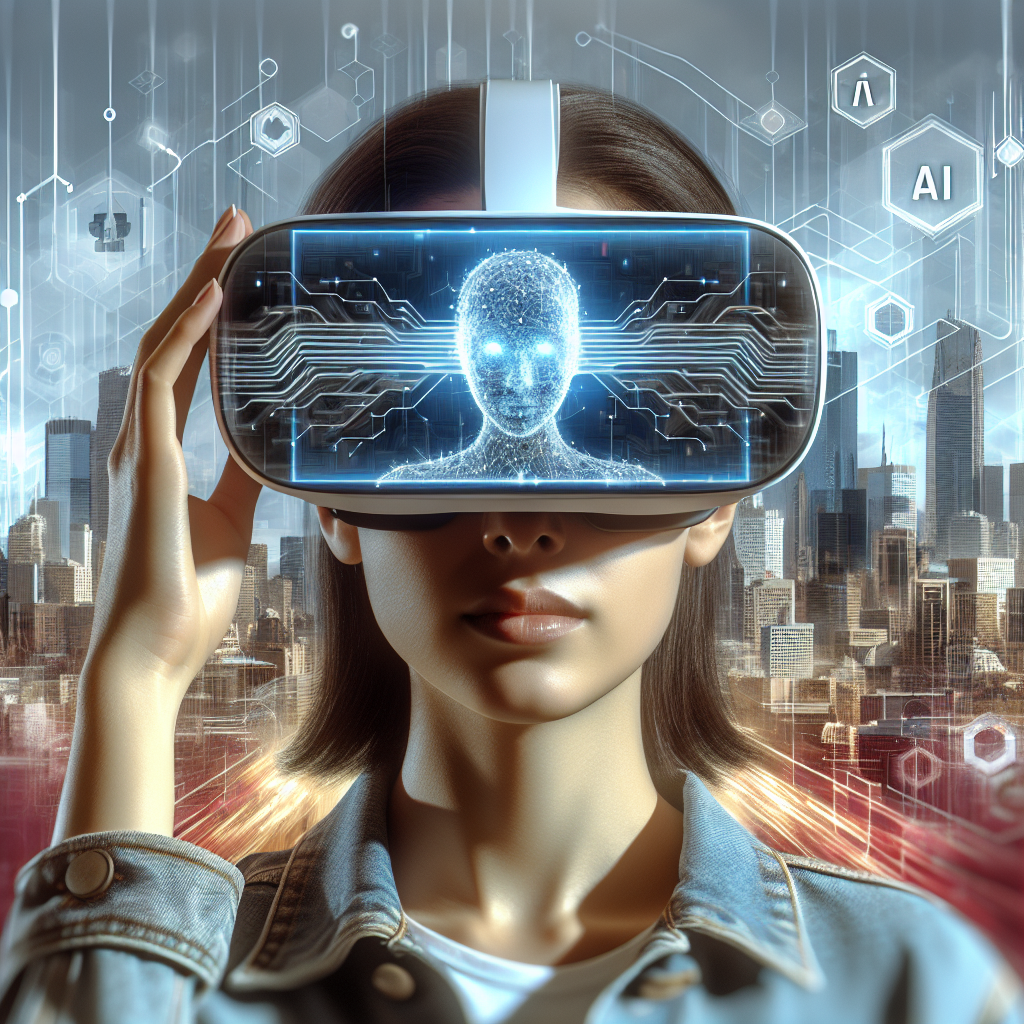Artificial Intelligence (AI) and Virtual Reality (VR) are two of the most exciting and rapidly evolving technologies of our time. While they are often discussed separately, their integration has the potential to revolutionize the way we interact with and experience digital environments. In this article, we will explore the role of AI solutions in virtual reality and how they are shaping the future of immersive technology.
AI in Virtual Reality
AI is already playing a significant role in enhancing the capabilities of virtual reality environments. One of the key ways AI is being used in VR is through the creation of intelligent virtual characters and NPCs (non-player characters). These AI-driven characters can provide more realistic and dynamic interactions with users in virtual environments, making the experience more engaging and immersive.
AI is also being used to improve the visual quality of virtual reality experiences. Through techniques like machine learning and neural networks, AI algorithms can enhance the resolution, lighting, and textures of virtual environments, making them more lifelike and realistic.
Another area where AI is making a big impact in virtual reality is in the development of personalized experiences. By analyzing user data and behavior, AI algorithms can create custom-tailored virtual environments that cater to the individual preferences and needs of each user. This not only enhances the user experience but also opens up new possibilities for applications in areas like education, healthcare, and entertainment.
AI-powered virtual reality applications are also being used in training and simulation scenarios. By combining the immersive nature of VR with the intelligence of AI, organizations can create realistic and interactive training experiences for employees in fields like aviation, healthcare, and defense. These simulations can help users practice complex tasks and decision-making in a safe and controlled environment, ultimately improving their skills and performance in the real world.
Challenges and Opportunities
While the integration of AI and VR holds great promise, there are also challenges that need to be addressed. One of the main challenges is the need for more powerful hardware and software to support AI-driven virtual reality experiences. AI algorithms can be computationally intensive, and current VR systems may not have the processing power or memory capacity to handle these demands. As technology continues to advance, however, we can expect to see more powerful and efficient systems that can support AI-driven VR applications.
Another challenge is the ethical implications of using AI in virtual reality. As AI becomes more sophisticated and autonomous, there are concerns about issues like privacy, bias, and accountability. Developers and policymakers will need to establish guidelines and regulations to ensure that AI-driven VR applications are developed and used responsibly.
Despite these challenges, the integration of AI and VR also presents exciting opportunities for innovation and creativity. By combining the intelligence of AI with the immersive nature of VR, developers can create new and exciting experiences that were previously not possible. From interactive storytelling to personalized learning experiences, the possibilities are endless for AI-powered virtual reality applications.
Frequently Asked Questions
Q: How is AI being used to create intelligent virtual characters in VR?
A: AI algorithms are used to power virtual characters in VR by giving them the ability to respond to user actions and interact with the virtual environment in a realistic and dynamic way. This includes features like facial expressions, gestures, and dialogue that make the characters more lifelike and engaging.
Q: What are some examples of AI-powered VR applications in training and simulation?
A: AI-powered VR applications are being used in a variety of training and simulation scenarios, such as flight simulations for pilots, surgical simulations for medical professionals, and military simulations for defense personnel. These applications allow users to practice complex tasks and decision-making in a safe and controlled environment, ultimately improving their skills and performance in the real world.
Q: What are some of the ethical considerations when using AI in VR?
A: When using AI in VR, developers and policymakers need to consider issues like privacy, bias, and accountability. As AI becomes more autonomous and sophisticated, there are concerns about the potential for misuse or unintended consequences. It is important to establish guidelines and regulations to ensure that AI-driven VR applications are developed and used responsibly.
In conclusion, the integration of AI solutions in virtual reality is opening up new possibilities for immersive and interactive experiences. From intelligent virtual characters to personalized environments, AI is helping to create more engaging and realistic virtual reality applications. While there are challenges and ethical considerations to address, the potential for innovation and creativity in this space is immense. As technology continues to advance, we can expect to see even more exciting developments in the intersection of AI and VR in the years to come.

